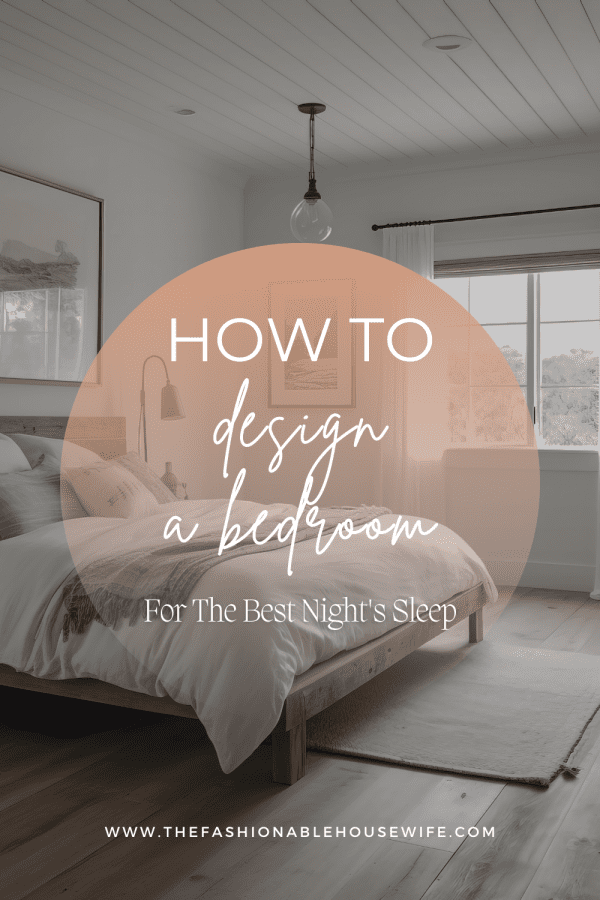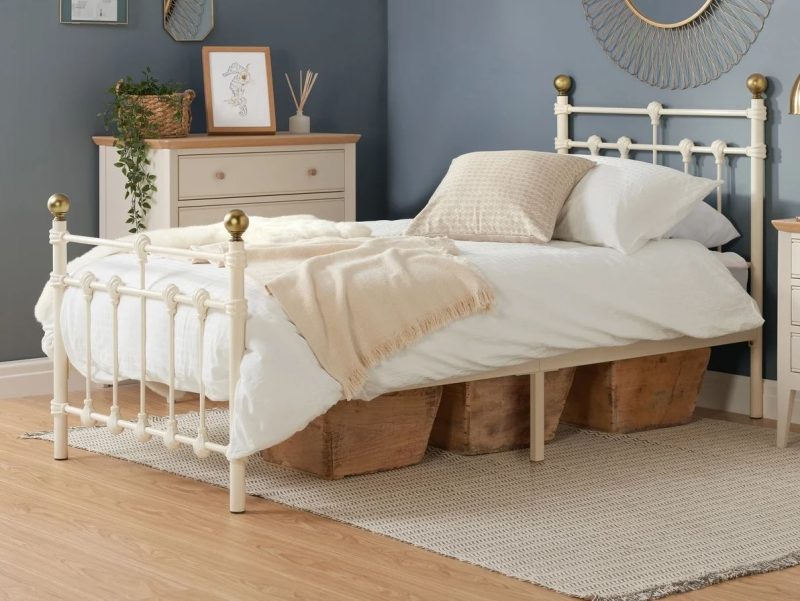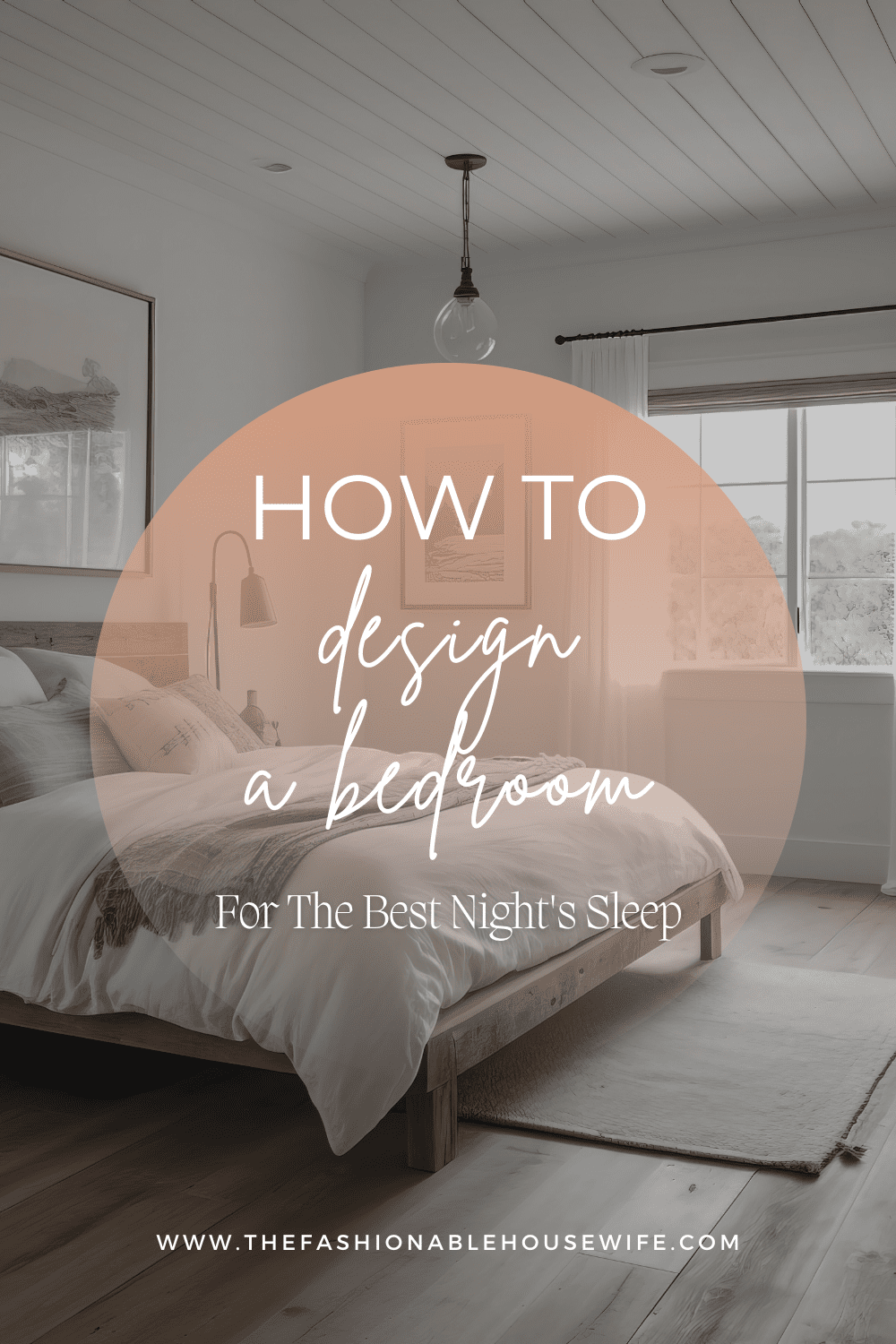How To Design a Bedroom For The Best Night’s Sleep

Your bedroom is crucial in how well you sleep, and crafting the right environment can make all the difference.
It’s not just about having a comfortable bed – it’s about creating a space that helps you relax, fall asleep quickly, and stay asleep through the night.

Mattress
When selecting a mattress, consider your body weight and preferred sleep position:
- Side sleepers often benefit from a softer mattress that allows their hips and shoulders to sink slightly, maintaining spinal alignment
- Back and stomach sleepers typically need a firmer surface to prevent excessive sinking and keep the spine neutral
- Heavier individuals may require a firmer mattress to provide adequate support, while lighter people might prefer a softer feel
Bedding
Your bedding needs to be breathable and lightweight to regulate your temperature – hollowfibre is the best material for the job, and it’s also cheaper than down and feather, which some people are allergic to.
For optimal comfort, get a winter duvet (13.5 togs) and a summer duvet (4.5 togs) rather than one all-season duvet.
Calming Colors
The colors in your bedroom can significantly impact your mood and ability to relax.
Soft, warm hues that promote a sense of calm are perfect, and while personal preference plays a role, many find that muted blues, gentle greens, and warm neutrals create a soothing atmosphere conducive to sleep.

Pictured: Bedroom décor with mute’s blues and natural colours, help create a soothing atmosphere conducive to sleep.
If you’re renting or on a budget, consider using bedding, rugs, and wall art to introduce calming colors without repainting.
Optimize Lighting
Install blackout curtains or shades to completely block out external light sources. Consider layering your window treatments with sheer curtains for daytime use for added flexibility.
Dimmer switches or low-wattage bulbs are best for bedside lamps. These allow you to gradually decrease light levels as you prepare for sleep.
Choose warm-toned bulbs with a low color temperature, typically around 2700K to 3000K, as these emit a soft, amber glow that promotes relaxation and drowsiness.
Manage Noise Levels
You need to reduce external and internal noise entering your bedroom.
For external noise:
- Install soundproof windows or add window inserts to reduce outdoor noise
- Use heavy, sound-absorbing curtains
- Seal gaps around windows and doors with weatherstripping or acoustic caulk
For internal noise:
- Add door sweeps and weatherstripping
- Use area rugs to absorb sound from footsteps
- Avoid placing noisy appliances near bedroom walls
- Insulate interior walls with sound-dampening materials
- Replace hollow core doors with solid core alternatives
Improve Air Quality

Poor air quality can lead to respiratory issues, allergies, and disrupted sleep patterns.
Open your windows for at least 15 minutes daily, preferably in the morning or evening when outdoor air quality is typically better.
A high-quality air purifier can also significantly improve your bedroom’s air quality – models with HEPA filters, which remove up to 99.97% of airborne particles, including dust, pollen, pet dander, and even some bacteria, are best.
De-clutter and de-stress
A stressful bedroom can ruin your sleep and put you in a foul mood after you wake up. It’s worth taking a good look around your room and asking yourself, “Do I really need all this stuff in here?”
Try spending just a few minutes each day tidying up. It’s incredible how quickly this can become a habit and how much calmer you’ll feel when your bedroom is in order (you’ll also love being able to find things easily again).
Summing up
A tidy, comfortable, and well-thought-out bedroom can improve your sleep quality and put you in a fantastic mood to start the day.
Investing in a new mattress if yours is old or uncomfortable is the ticket to comfort, but the colors, lighting, and ambiance in your bedroom are also crucial.

